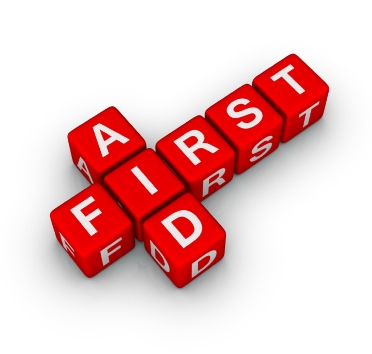SURVEY THE SCENE
Survey the scene and approach the victim. Determine whether the scene is safe. Look for dangers, such as downed powerlines, traffic, unstable structures or fast-moving water. Determine what may have happened, how many victims are involved, and if any bystanders can help.
If several persons appear to be injured, perform triage.
SURVEY THE PATIENT
Perform an initial assessment. Get consent from a conscious victim (parent/guardian if the victim is a minor) before providing care. If the victim is unconscious, consent is implied. Use infection control precautions and check for signs and symptoms of any life-threatening conditions and care for them. To perform an initial assessment:
- Check the victim for consciousness and obtain consent if the victim is conscious;
- Check the CAB (Circulation, airway and breathing);
- Check for severe bleeding.
Provide brief care for the conditions. If the patient lacks air or circulation, their brain will suffer damage after approximately four minutes. To care for breathing and circulation means first clearing the airway, and briefly attempting to restart their breathing or circulation with rescue breathing or CPR. This step is crucial, because an unconscious person's airway can be blocked by a normal, comfortable-looking head position (e.g., on their back with a pillowed head). Often, simply tilting the head back will open the airway and restart their breathing. Likewise, many people recovering from a blocked airway vomit, and if they are unconscious, they can drown in the vomit. The standard prevention for both these issues is to turn a breathing, unconscious patient on their side, turning their head and spine in the same movement to avoid spinal injury, pillowing their head on one of their arms.
Do not move casualties unless it is necessary to remove them from danger, or to make treatment possible (such as onto a hard surface for CPR).
CALL FOR EMERGENCY SERVICES
The next step is to activate emergency medical services by calling for help using a local emergency telephone number. Operators will generally require the caller's name and location and some information on person that is being called about (level of consciousness, injuries, name if known, chronic medical illnessess if known).
Calling for emergency medical services must take priority over extended care such as long term rescue breathing or extended CPR, since these techniques are intended to gain time for emergency services to arrive as part of the chain of survival. However, if bystanders are available, both can be pursued at the same time.
If you ask bystanders to call an ambulance for you, make sure they report back to you once released by the emergency operator to confirm that the call has been made. See Call for help.
DO A SECONDARY SURVEY AND BEGIN EXTENDED CARE
The secondary survey is to gather information about conditions or injuries that may not be life threatening, but may become so if not cared for.
A properly trained and certified first aider performs three stages in the secondary survey:
- Interview
- Vitals
- Head-to-toe examination
Perform a secondary survey only if you are sure that the victim has no life-threatening (ABC) conditions.
It is also essential that stages be performed in order, with the interview first, so that in case the patient loses consciousness all verbal medical and related information has been obtained. Additionally, any information obtained should be recorded.
1) Interview the victim
- Signs and Symptoms - Visible indications of injury and patient reported sensations (e.g. pain)
- Allergies - especially those relevant to injury (i.e. allergy to latex, pencillin, etc.)
- Medications - what current or recent medications the patient is taking
- Past Medical History - any related history, or medical conditions that could complicate treatment (e.g. heart condition)
- Last meal - last food and/or drink
- Events - confirm how injury most likely occurred
(Note - interview should include bystanders as well, to supplement info from the patient)
2) Vitals
Most certifications at the first-aid level include only the following four vitals
- LOC - Level of Consciousness description (e.g. - alert, aware, disoriented, confused, unresponsive)
- Breathing Rate - Number of breaths per minute. Calculate by counting breaths for ten seconds and multiplying by six, or 15 seconds and multiplying by four.
- Pulse Rate - Number of heartbeats per minute. Calculate by counting pulse for ten seconds and multiplying by six, or 15 seconds and multiplying by four. Pulse for an unconscious person is taken on the neck (carotid pulse) and on the wrist (radial pulse) for a conscious person.
- Skin Condition - Pale vs. normal, cool/cold vs. hot, clammy/sweaty vs. dry
3) Head-to-Toe examination
- Perform a head-to-toe examination (for a child, toe-to-head)
- Look for medical alert bracelets or medallions.
- Compare one side of the patient against the other
- Look for pain, or deformity

